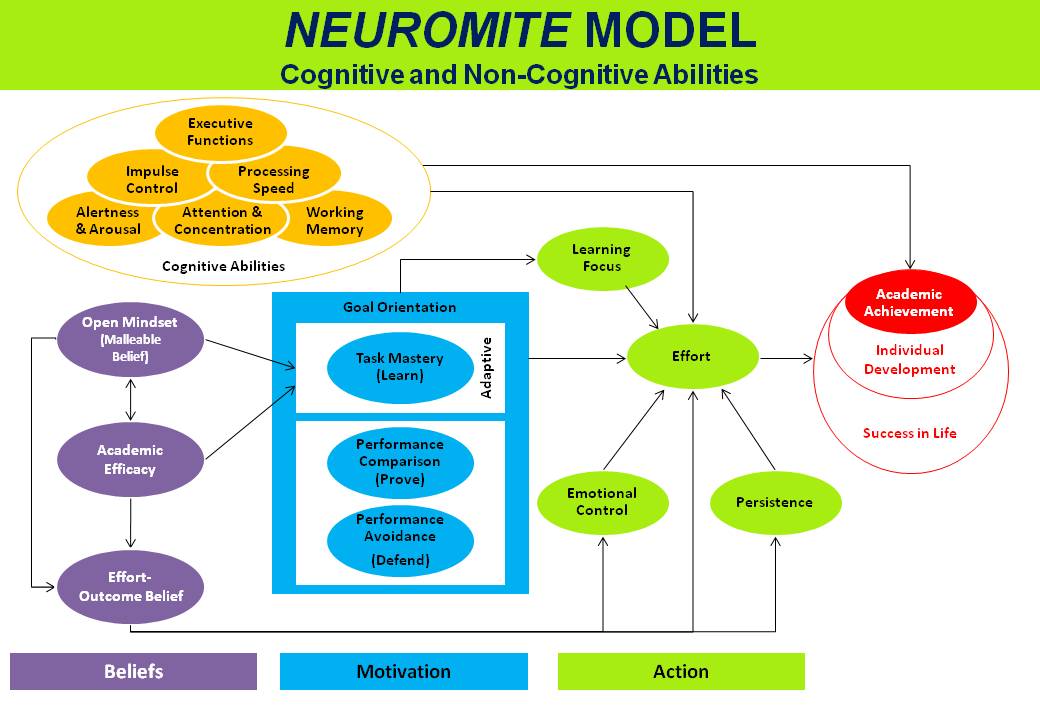The NEUROMITE model takes a holistic perspective by integrating and specifying key cognitive and non-cognitive abilities because of their relevance to, and impact on, learning effectiveness and academic achievement. The model has been developed drawing upon international research and through preliminary research in Australia using the NEUROMITE program.
The model highlights that there are are two pathyways to academic success:
The first pathway is through the acquisition and development of cognitive abilities, especially those that are age relevant. As educators, we all want students to be attentive, remember, be organised and effective learners who are able to transfer learned concepts into assignments and exams. But that cannot happen if their capacity to regulate behaviour, memorise and attend to relevant information is compromised through diminished cognitive abilities.
The second pathway is through the non-cognitive factors, which can be divided into three areas:
- Beliefs – A student's self-perceived capacity for learning and development now and into the future. These beliefs have a profound impact on a student’s commitment, orientation to learning and effort itself.
- Motivation – The type of goals that the student considers important for learning and their development in general.
- Action - The actual effort with which a student engages in learning - the extent to which he/she is capable of, and prepared to put effort into, working hard at learning, school work, assignments, and exams.
The NEUROMITE Model specifies key areas for targeting and developing student abilities that directly impact on academic development and their development overall. When teachers are aware of the cognitive and non-cognitive profile of a student, they gain key insights into the student's strengths and weaknesses, which helps inform best teaching strategies to support the student.

